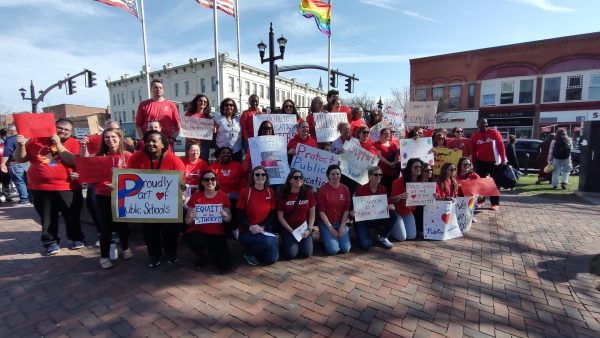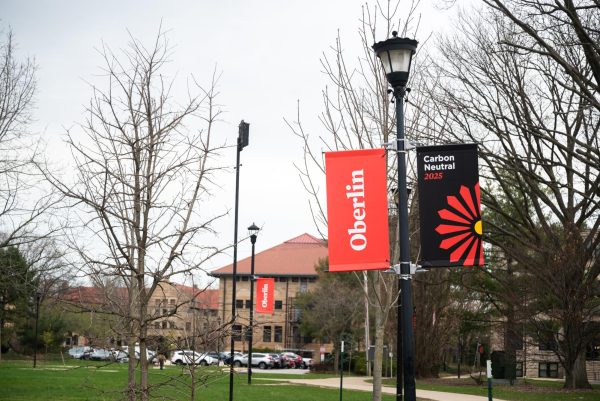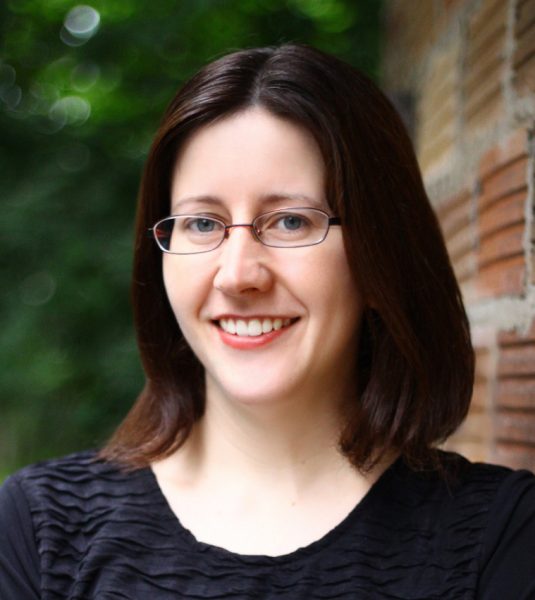City Government Engages in Community Discussion on Equity in Oberlin
On Tuesday, March 7, members of the Oberlin community gathered to discuss social equity in Oberlin. Facilitated by the City of Oberlin and the Center for Community Solutions, a non-partisan think tank based in Northeast Ohio, the discussion centered on the question “Is Oberlin a great place for people of all backgrounds?”
“It starts with an approach the City Council has taken related to a five-point strategy,” City Manager Rob Hillard said. “In other words, we’re approaching our process with consideration of city services, environmental sustainability, social equity, community development, and neighborhood enrichment. So we’ve developed a social equity working group that’s been tasked by the City Council to pull together strategies and raise the level of consciousness of this particular issue.”
The meeting included roundtable discussions on equity — defined as the fair and just treatment of all individuals, regardless of race, age, sex, and other demographic factors — and the experiences attendees have had living in Oberlin. City Council Member Elizabeth Meadows, who is a member of the City’s Social Equity Working Group, attended the meeting to share her experiences.
“The thing about social equity is it’s like trying to look at our community, the way we operate with one another, the way the businesses operate with the citizens and so on.” Meadows said. “It’s just looking for those little cracks and kinks that need to be filled in and looking for things that need to be corrected. It’s not a matter of being able to put a Band-Aid on something. It’s a matter of being able to educate people as to what is inequity.”
The Center for Community Solutions focuses on health, social, and economic issues. They operate as a consulate and provide research services to develop advocacy agendas. Their three areas of expertise lie in applied research, nonpartisan public policy and advocacy, and communications, and the company has worked within Cleveland and Northeast Ohio for over 100 years. After researching racial disparities in Lorain County, the City of Oberlin began working with the CCS to target Oberlin’s directly.
“We were hoping to hear directly from residents of Oberlin and ask them some probing questions about equity in this community,” Chief Operating Officer of Community Solutions Emily Campbell said. “I was so pleased to hear so many people willing to share their personal experiences with equity and their impressions of the community. And one of the great things about the conversation tonight is that we had some people who’ve lived in Oberlin for only a few months and some who have lived here their whole lives, so we really got a great variety of perspectives on how they experience the community.”
A report conducted in 2021 by the Center for Community Solutions stated that Lorain County was 85 percent white, 10 percent Hispanic/Latino, 9 percent Black, and 1 percent Asian. They also found consistent racial disparities in education, life expectancy, and other aspects of quality of life. For example, Black workers were disproportionately represented in lower-wage occupations. Education was also emphasized, as educational attainment for Black and Hispanic/Latino residents was lower than for white students.
“I think this lack of equity is because we are not, as a country, making sure that our populace is well educated,” Meadows said. “I think that one of the reasons we have such conflict and animosity in our country is because people don’t really know how our country came to be.”
While the 2021 report showed Oberlin being more diverse than more rural parts of Lorain County, the County overall charts Black people at a life expectancy of nearly five years less than the white life expectancy. The Center for Community Solutions has conducted research in education, justice, economics, and health outside of Lorain County as well and hopes to integrate Oberlin into the larger conversations on solutions for these disparities nationwide.
“I will say that issues of social equity and racial equity, as well as issues of equity among people of all ages and people from the LGBTQ+ community, are conversations that are happening across this country,” Campbell said. “So it’s not a surprise to be asked by a place like Oberlin to participate in this kind of work.”
Tuesday’s meeting is part of an ongoing equity survey to be conducted over the next few months. These surveys will be combined with comprehensive data and research directed toward understanding equity and discrimination within Oberlin. This research will be presented to the City Council in June, and both the City and the Center for Community Solutions hope to gain as much awareness and participation as possible from members of the community of Oberlin.
“Raising awareness is really important to our community organization. From there, we wanna put in action steps,” Hillard said. “We don’t want to develop a report that sits on a shelf and doesn’t raise awareness. We want to do the things we discuss in the report.”






